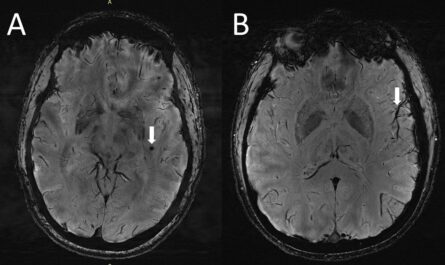Researchers have uncovered a novel neural pathway that sheds light on how the brain processes high-intensity fear responses critical for survival, according to a recent study published in Nature. Co-authored by Jones Parker, Ph.D., assistant professor of Neuroscience, Pharmacology, Psychiatry and Behavioral Sciences, the study delves into the mechanisms behind the transition to intense fear behaviors in mammals when faced with potential threats.
The amygdala, known for orchestrating survival responses, plays a pivotal role in guiding mammals through various high-intensity fear behaviors, from freezing or immobility to flight, when confronted with danger. However, disruptions in these responses in humans can lead to psychiatric disorders like post-traumatic stress disorder, anxiety, and panic disorders. The neural circuits responsible for these reactions have long eluded scientists until now.
Through the use of mouse models crafted by Jonathan Fadok, Ph.D., the Burk-Kleinpeter Inc. Professor at Tulane University and the study’s senior author, researchers identified the neural pathways linked to the intensification of fear responses. Leveraging innovative techniques developed by Parker’s lab, such as in vivo calcium imaging, scientists pinpointed a previously unidentified connection between the brain’s prefrontal cortex and the amygdala. These regions are crucial for emotional processing and decision-making, regulating the shift towards heightened fear behaviors.
Researchers employed chemogenetic and optogenetic methods to modulate this newfound pathway in mice, uncovering a fresh neuronal projection involving neurotransmitter release from excitatory neurons in the prefrontal cortex’s dorsal peduncular region. This understudied brain area interfaces with the amygdala, directly influencing the animals’ fear levels.
According to Parker, “We have the cortex projecting to this ancient brain structure involved in fear processing, which taps into the amygdala and scales the fear levels experienced by the animals.” Molecularly characterizing the brain regions driving this fear response escalation could offer new therapeutic targets for psychiatric disorders, Parker noted, potentially revolutionizing treatment approaches.
Parker further explained, “This link between the human-expanded prefrontal cortex, responsible for our environmental expectations, and the primal fear-regulating brain circuit could impact fear-related pathologies and our understanding of them.” Fadok, on the other hand, highlighted ongoing efforts in his lab to analyze the prefrontal cortex’s dorsal peduncular region more deeply, aiming to enhance comprehension of its neuronal makeup and overall functionality.
Fadok emphasized the significance of grasping “top-down control,” referring to cortical regulation over the ancient fear-regulating structures, as a gateway to advancing treatment modalities. “By unraveling cortical control over these ancient fear-regulating structures, we can pave the way for improved therapeutic strategies,” Fadok concluded.
*Note:
1. Source: Coherent Market Insights, Public sources, Desk research
2. We have leveraged AI tools to mine information and compile it




